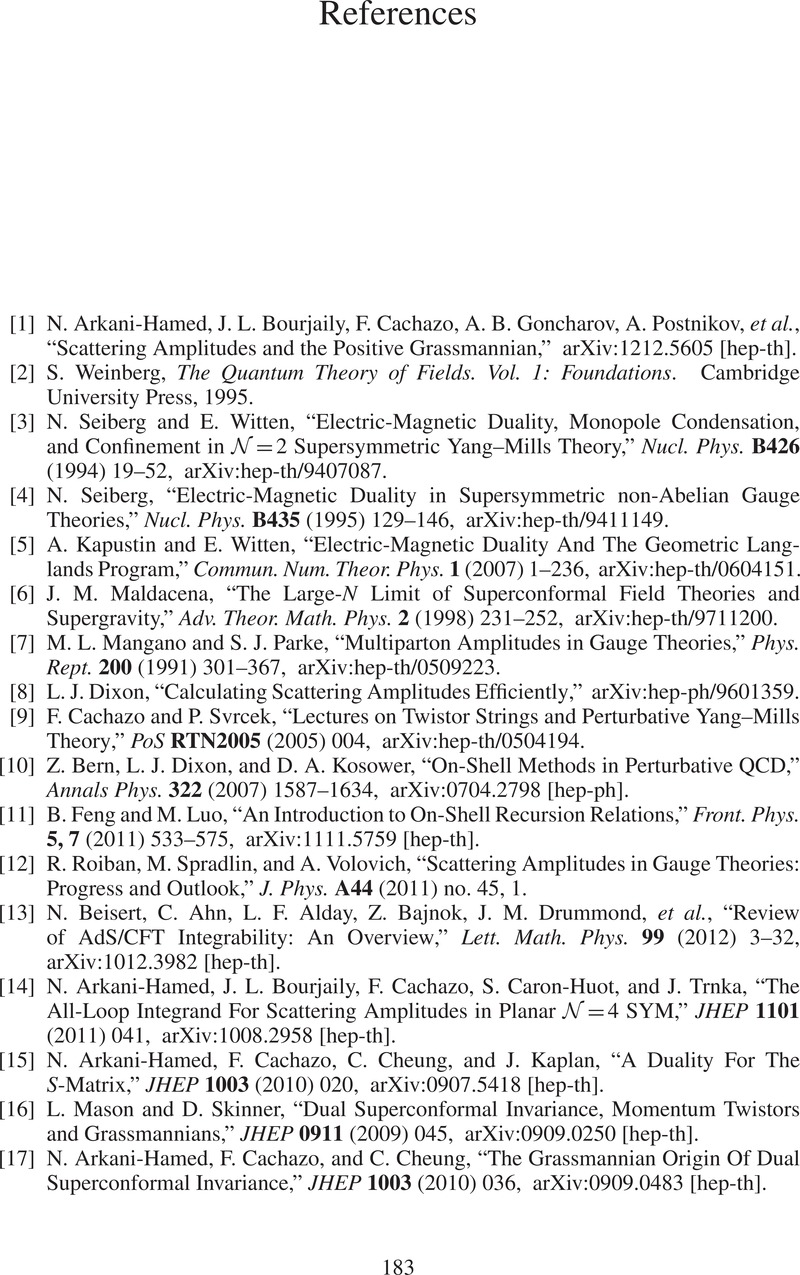Book contents
- Frontmatter
- Contents
- Acknowledgments
- 1 Introduction
- 2 Introduction to on-shell functions and diagrams
- 3 Permutations and scattering amplitudes
- 4 From on-shell diagrams to the Grassmannian
- 5 Configurations of vectors and the positive Grassmannian
- 6 Boundary configurations, graphs, and permutations
- 7 The invariant top-form and the positroid stratification
- 8 (Super-)conformal and dual conformal invariance
- 9 Positive diffeomorphisms and Yangian invariance
- 10 The kinematical support of physical on-shell forms
- 11 Homological identities among Yangian-invariants
- 12 (Relatively) orienting canonical coordinate charts on positroids configurations
- 13 Classification of Yangian-invariants and their relations
- 14 The Yang–Baxter relation and ABJM theories
- 15 On-shell diagrams for theories with N < 4 supersymmetries
- 16 Dual graphs and cluster algebras
- 17 On-shell representations of scattering amplitudes
- 18 Outlook
- References
- Index
- References
References
Published online by Cambridge University Press: 05 May 2016
- Frontmatter
- Contents
- Acknowledgments
- 1 Introduction
- 2 Introduction to on-shell functions and diagrams
- 3 Permutations and scattering amplitudes
- 4 From on-shell diagrams to the Grassmannian
- 5 Configurations of vectors and the positive Grassmannian
- 6 Boundary configurations, graphs, and permutations
- 7 The invariant top-form and the positroid stratification
- 8 (Super-)conformal and dual conformal invariance
- 9 Positive diffeomorphisms and Yangian invariance
- 10 The kinematical support of physical on-shell forms
- 11 Homological identities among Yangian-invariants
- 12 (Relatively) orienting canonical coordinate charts on positroids configurations
- 13 Classification of Yangian-invariants and their relations
- 14 The Yang–Baxter relation and ABJM theories
- 15 On-shell diagrams for theories with N
- 16 Dual graphs and cluster algebras
- 17 On-shell representations of scattering amplitudes
- 18 Outlook
- References
- Index
- References
Summary

- Type
- Chapter
- Information
- Grassmannian Geometry of Scattering Amplitudes , pp. 183 - 191Publisher: Cambridge University PressPrint publication year: 2016



